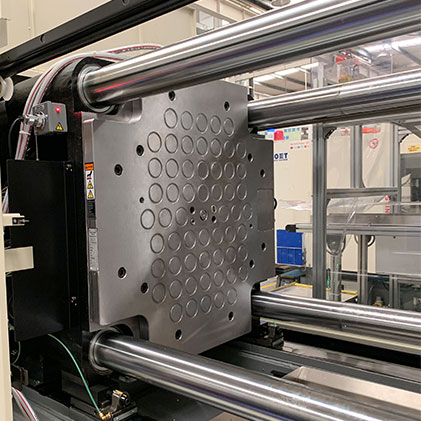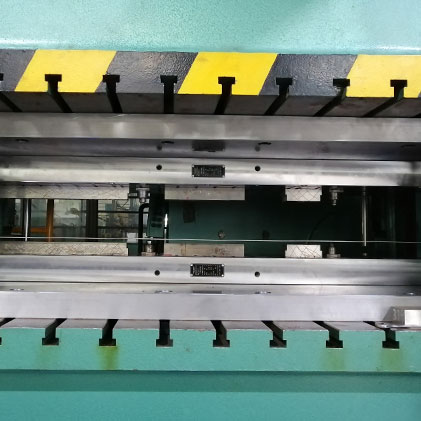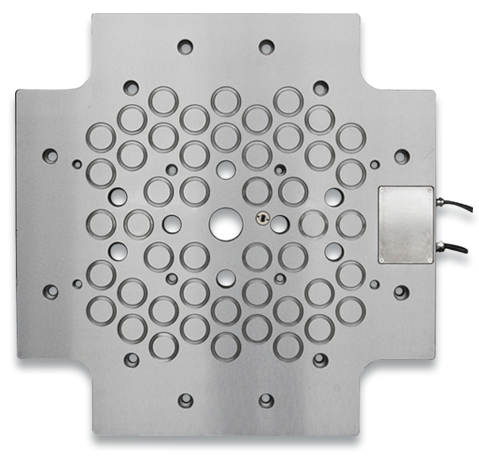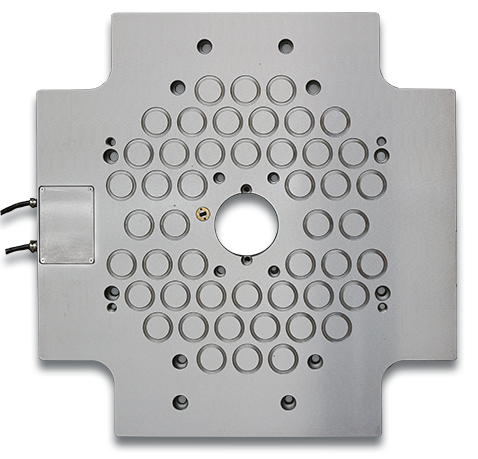Q: What parameters are taken into account in the design of an electro permanent magnet plate?
A: This product is used to overcome the friction force that occurs in the ejection process, cumulated with the weight of the mould, by magnetically clamping the backplate of the mould, which prevents the mould from falling out of the machine. The parameters that are considered are:
(1) The weight of the mould.
(2) The maximum opening force of the machine.
(3) The clamping force of the movable side is greater than the clamping force of the fixed side because of the acceleration.
Q: Does the mould falls out of the machine in the event of a power failure?
A: No, this system is an electro permanent magnetic system and independent from the electric current. It only uses the electric power for a very short period (0.5 sec) to run the MAG and DEMAG cycle. Then the power drops down. The effective force is generated by powerful permanent Rare-Earth magnets.
Q: Is magnetic radiation harmful to humans?
A: No, harmless. After magnetization, the magnetic system forms a closed magnetic field on the surface of the magnetic plate. The effective distance range of the magnetic field lines is 20 mm. Once above 20 mm, the magnetic field becomes very thin and comparable to the magnetic field strength in the air. So, people with pacemakers, bank cards, watches, cell phones and other items should not get close to the magnetic field (20 mm)
Q: Is the magnetic plate water resistant, oil resistant, corrosion resistant?
A: No problem at all. By using a multi-layer, waterproof, anti-oil, and corrosion-resistant structure, it is even possible to work in water, oil and gas environment.
Q: Can the magnetic system withstand high temperature?
A: Depending on the version, the maximum temperature is: T1: 120 ° C, T2: 150 ° C, T3: 180 ° C. At a temperature of> 180 ° C we do not recommend the use of magnetic clamping plates.
Q: Does an electro permanent magnetic system interfere with the injection moulding machine?
A: The electro permanent magnetic system only uses current during the mould change. The magnetic field is only 20 mm high from the clamping surface of the magnetic plate. All other zones are non-magnetic.
Q: The back plate of the mould is not 100% flat. How to deal with this?
A: The magnetic plate must fit completely against the magnetic clamping surface. Remove any heights, clean the back plate, tighten additional screws, ...
Q: Which data must be confirmed when applying for an electro permanent magnetic quick-change system?
A. Branch and model of the machine
B. Closing force (TON)
C. Drawings of the machine clamping plates, dimensions of the centring ring
D. Minimum mould size
E. Maximum mould weight (fixed and movable side)
D. Maximum mould contact temperature.
Q: Is it possible to clamp moulds with an insulation plate?
A: Moulds with the insulation plate on the backplate cannot be used. It is possible if the insulation plate is placed between the backplate and the moulding plate.
Q: What happens if the injection nozzle head is not properly adjusted?
A: Due to the impact, it is possible that the mould is pushed off the magnetic plate. In any case, avoid that the injection nozzle head goes too deep. Use a safety chain during the start-up phase.
Q: What if there are recesses and holes in the back plate of the mould?
A: The magnetic system has been developed with a safety margin of 30%. So, if, for example, the back plate of the mould consists of 20% holes, the system is still intrinsically safe. Keep in mind that other conditions, such as the flatness of the back plate of the mould, also influence the total attraction force of the magnetic plate.
Q: What happens if the mould temperature becomes too high?
A: If the temperature of the backplate of the mould exceeds the allowed temperature, an alarm is generated, and the automatic production process stops immediately. The solution is to place an insulation plate between the backplate of the mould and the moulding plate.
Q: Should the opening speed of the machine be within certain limits?
A: Yes, when the machine opens too quickly, especially in the first phase, there is a vacuum effect in the mould that can pull it off the magnet plate.
Q: What to do if the mould does not open?
A: If the mould does not open due to circumstances, the opening force is increased. The moment that the opening force becomes greater than the clamping force of the magnetic plate, the mould will release from the magnet plate, and the proximity switch will generate an alarm. The machine will immediately stop.
When such a situation arises, every precaution must be taken to prevent the mould from falling. For example the use of a safety chain.











